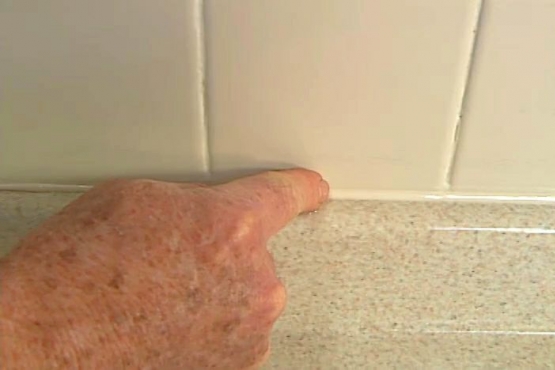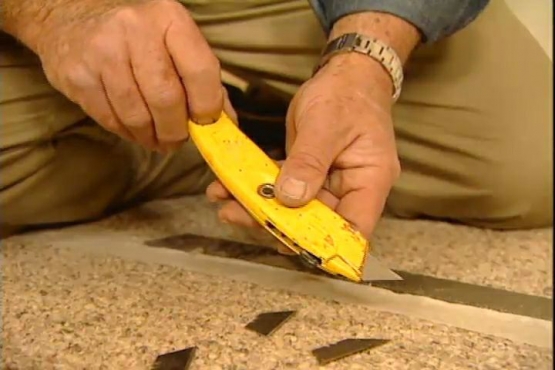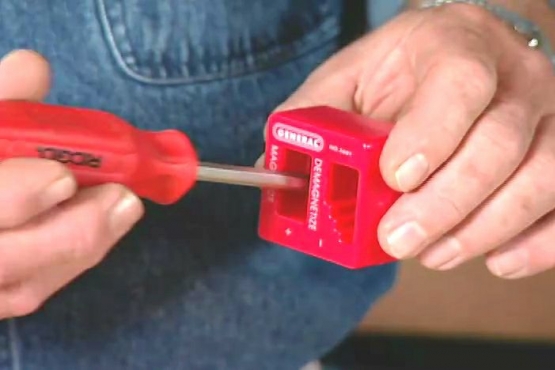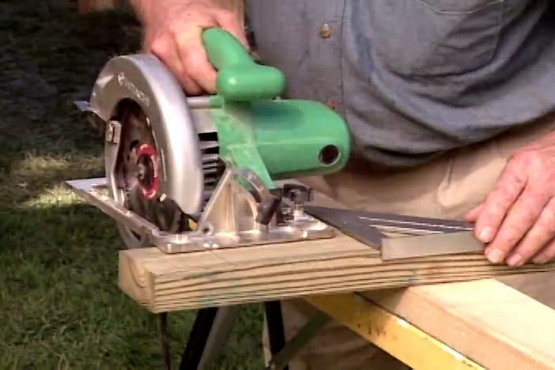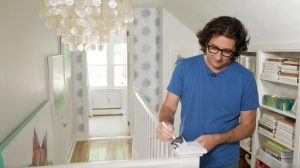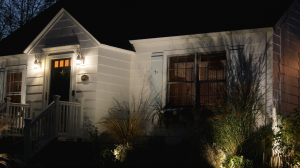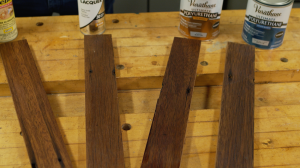RON HAZELTON:
You know, I love fireplaces and I'm fortunate to have two here in the house. But one place I've always wanted a fireplace but never had one, is right here in the kitchen. Why the kitchen? Because like most families, we spend a lot of time hanging out here.
So what I'd like to do is bring the ambience of the family room fireplace into the kitchen. To get some ideas, I go online and start a search. It leads me to the Fireplace XtraordinAir site and a fireplace concept that's new to me: something called a “portrait” fireplace. Portrait fireplaces get their name from the fact that they're usually up off the floor, closer to picture height. They're also smaller; small enough, in fact, to fit snugly into a corner like this one in the kitchen.
Now, the fireplace that I've chosen comes with its own cabinet. And the installation is straightforward enough. But because it involves requires a gas line, electrical and venting, I think I’m gonna leave this installation up to the pros.
Rob Michanczyk is with Dean's Stoves. He starts things off by removing the baseboards in the corner where the fireplace will sit. First, cutting through the caulk with a sharp utility knife. This will avoid tearing the wallboard when the base is pulled off.
Rob taps a prybar between the baseboard and wall, then slips in a wide putty knife behind, to keep from denting or crushing the surface. Then Alan Posenza with Neves Plumbing begins working on the natural gas supply. First, he drills an exploratory hole. Then, checks in the basement to make sure he'll clear pipes and wiring.
Once he's satisfied there are no obstructions, he drills two larger holes through the floor, one for a shutoff valve, and the other for a gas line. [DRILLING SOUNDS] Next, the base cabinet is carried in and set in place. Then installer Mauro Falotico drills an inch-and-a-half hole through the top.
The gas line is then pushed through the floor and pulled up through the hole in the cabinet.
An electronic stud sensor is used to locate wall studs near the corner. Then, metal brackets are mounted to the cabinet deck, and attached to the studs with screws.
With the cabinet base secure, the core of the fireplace, the firebox and burner, is set temporarily in place and the vent location marked on the interior wall. Then the firebox is removed and Rob places the vent collar in position and traces the shape on the wall.
A long bit is used to bore through the center, to the outside wall. Then the wallboard is cut away at the inside. [SAWING SOUNDS] On the outside, the procedure is repeated and the exterior shingles and sheathing are cut away, using a reciprocating saw.
The vent collars are checked for alignment, the vent cap is set in place, the outline is traced and the shingles are cut away, using a circular saw. The blade depth is set so that it cuts only through the shingles, and not into the sheathing.
Then the cut shingles around the opening are removed. When we come back, we'll set the firebox in place for the final time.
[MUSIC]
Now, it’s time to put in the firebox for good, and install the vent.
The vent collar is slipped in place and the vent cap is eased into position.
Then, the vent sections are screwed together, and the cap is attached to the sheathing. Finally, silicone caulk is applied around the edge of the vent cap.
Now, Alan the plumber, can connect the natural gas line to the burner. First, he installs a brass connector to the unit, then strips off the insulation from the end of the flexible gas line – slips on a split ring, attaches the line to the brass fitting on the burner, and tightens everything using a pair of wrenches.
In many areas, code requires an easily accessible shutoff valve within three feet of a gas appliance. This flush-mounted valve on the floor can be turned on and off with a key. With the gas connection complete, it's time for a safety check.
Alan turns on the gas at the valve and uses this portable detector to test the line, fittings and connections. The instrument will sense even minute gas leaks in a matter of seconds. Because the fireplace has a built-in fan, it requires an electrical connection.
Wires are twisted together, secured with wire nuts -- and tucked carefully inside the junction box. The box cover is attached in place and the strain relief screws tightened. What we have now is a functioning heater, capable of putting out over 16,000 BTUs.
But in the next few steps, this is going to go from just a heater to a portrait fireplace. Next, wooden cleats are attached to the wall on both sides of the corner. Then it's time to bring in the upper cabinet, and set it in place, surrounding the burner and firebox.
Screws are run through the top and into the wall cleats, securing the upper section to the wall. Now the tempered glass face plate is removed and a ceramic fiber liner installed. The liner not only acts as a heat shield between the firebox and cabinet, it also reflects heat outward.
The burner is disguised with a ceramic plate that looks like a charred wood remnant. Next, the ceramic logs are set in place. These lock in specific positions to look convincingly like partially burned firewood.
But what happens next is responsible for giving the fireplace an even more realistic look. These coal-like nuggets are also made of ceramic and, along with this fibrous version of the material, some of which is shredded on by flaking it off with a stiff brush, will radiate a warm red color that bears a striking resemblance to glowing embers.
With everything ready, the tempered glass plate is put back and covered with a decorative face, available in a variety of metals and finishes. Now, I've chosen brushed nickel. Well, I got my kitchen fireplace: everything I wanted, and more.
Ambience, a great source of heat and well, I won't be carrying wood for this one, because I've got remote control.
Kurt Rumens, the inventor of the portrait fireplace, came up with the idea when he and his wife were lodging at a cozy bread and breakfast. He began thinking how a fireplace higher up on the wall could be enjoyed from just about anywhere in the room. Great idea, Kurt.
